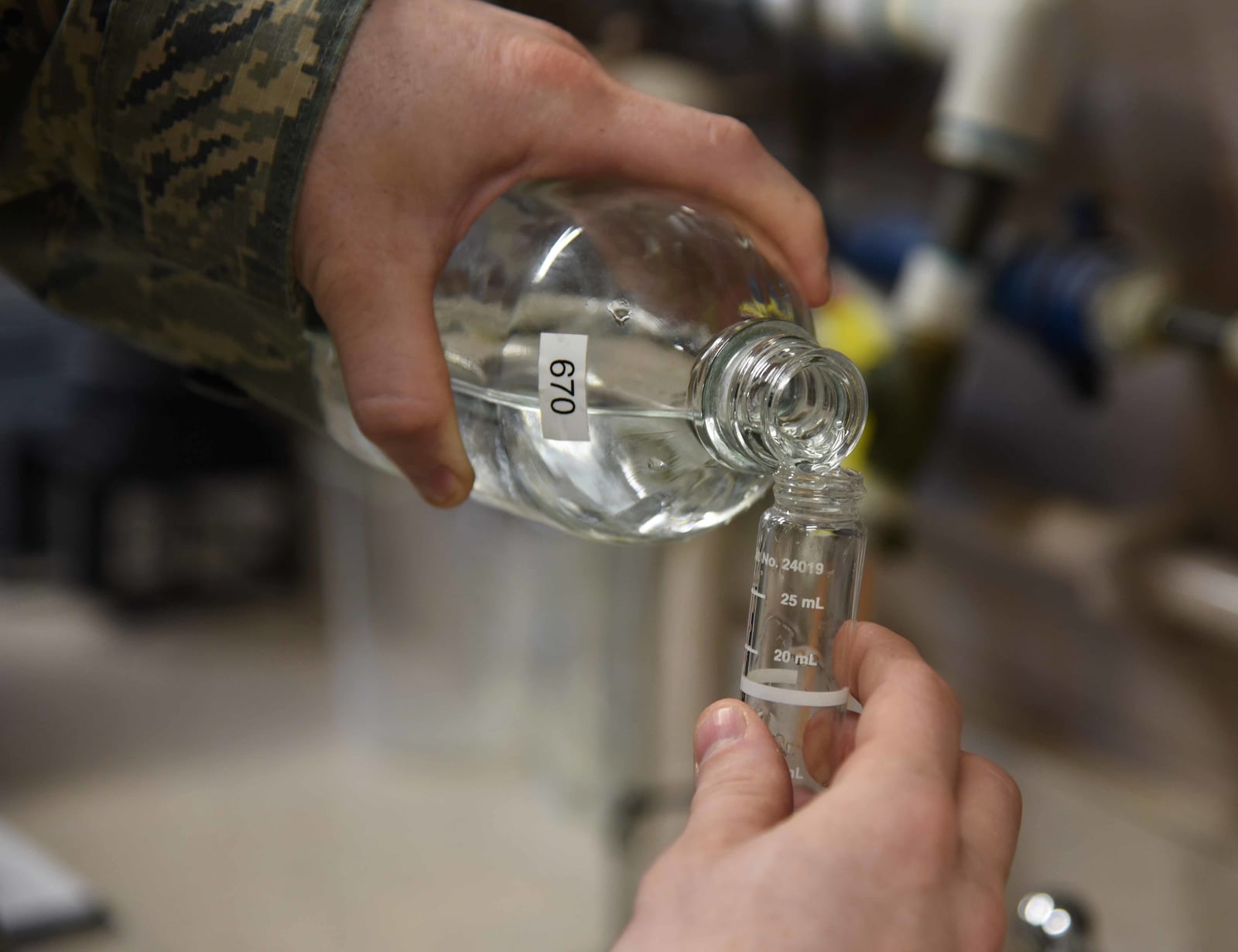The water at or around at least 126 military installations contains potentially harmful levels of perfluorinated compounds, which have been linked to cancers and developmental delays for fetuses and infants, the Pentagon has found.
In a March report provided to the House Armed Services Committee, the Pentagon for the first time publicly listed the full scope of the known contamination. The Defense Department identified 401 active and Base Closure and Realignment installations in the United States with at least one area where there was a known or suspected release of perfluorinated compounds.
These included 36 sites with drinking water contamination on-base, and more than 90 sites that reported either on-base or off-base drinking water or groundwater contamination, in which the water source tested above the Environmental Protection Agency’s acceptable levels of perfluorooctane sulfonate or perfluorooctanoic acid, also known as PFOS and PFOAs.
The man-made chemicals, which can be used to make items heat or water resistant, are found in everyday household, food and clothing items, even take-out food wrappers.
At military bases, however, they are concentrated in the foam used to put out aircraft fires.
Maureen Sullivan, deputy assistant secretary of defense for environment, safety and occupational health, said DoD has already made safety changes at affected bases, including installing filters and providing bottled water to families living there. It has also released the full list of installations, reported in a lengthy chart attached toward the end of the congressional report, and will be working with the Centers for Disease Control next year on a study of the potential long-term effects of exposure.
Air Force Secretary Heather Wilson was asked about the exposure this week on Capitol HIll, where she was testifying about the service’s fiscal 2019 budget needs.
“It’s an issue not just in New Hampshire, but at military installations across this country,” said Sen. Jeanne Shaheen, D-New Hampshire. “We have 1,500 people who have been tested with elevated levels in the Portsmouth area, who are anxious about their future and their children’s future. And I know there are many people throughout the Air Force and our other military installations who share that concern.”
In all, 25 Army bases; 50 Air Force bases, 49 Navy or Marine Corps bases and two Defense Logistics Agency sites have tested at higher than acceptable levels for the compounds in either their drinking water or groundwater sources. Additionally, DoD tested 2,668 groundwater wells both on and in the surrounding off-base community and found that 61 percent of them tested above the EPA’s recommended levels.
RELATED

In 2016 the EPA established a new, lower guideline for acceptable levels of PFOS or PFOA levels in water supplies: no more 70 parts per trillion. While the EPA did not make the guidelines enforceable, DoD decided to test all of its locations and work toward complying with the new standards.
It won’t be a quick fix, Sullivan said.
The first target for the department was to address the 36 direct drinking water sources that are contaminated and “cut off that human exposure as soon as possible,” Sullivan said. DoD was only able to do that quickly at the 24 locations where it manages the water supply. At those locations it has installed filters at the water source or inside base housing, relocated water usage to another well, or provided alternate drinking water, such as water bottles, for personnel, Sullivan said.
For the other 12 drinking water sources, provided either by a contracted vendor or through the local utility, it’s a harder fix, because the EPA’s guidelines are not enforceable. For example, commercial airports and industrial sites also use the foam, which could impact a municipality’s drinking water, but it will be up to that municipality to determine if it will test and make fixes to comply with the EPA’s guidelines, Sullivan said.
“It’s up to the owner of that system to make a decision on what they’re going to do,” Sullivan “So we’re on a fine line of trying to provide drinking water to our folks when we’re buying it from somebody else.”
In those cases the department is working with the vendors or utilities on a solution, and providing bottled water or filters as needed, Sullivan said.
Each base should have its water information posted, Sullivan said. Families with any concerns should be able to go to the base’s restoration program manager — an on-site point person tasked with addressing environmental cleanup issues ― with their questions.
DoD has already spent $200 million studying and testing its water supply, and also providing either filters, alternate wells or bottled water to address contamination.
For the groundwater sources, both on-base and off-base, however, cleanup will take years to address, Sullivan said. Those groundwater sites will be added to the department’s long list of environmental cleanup responsibilities it has at each of its more than 2,900 facilities around the world, and will prioritize that cleanup based on risk. Sullivan estimates the groundwater perfluorinate cleanup will add about $2 billion to the $27 billion previously identified cleanup projects for which the department is responsible.
The services are also phasing out the firefighting foam they use and working on replacements that do not contain perfluorinated compounds, Sullivan said.
Tara Copp is a Pentagon correspondent for the Associated Press. She was previously Pentagon bureau chief for Sightline Media Group.





